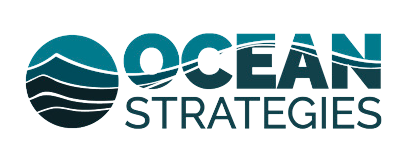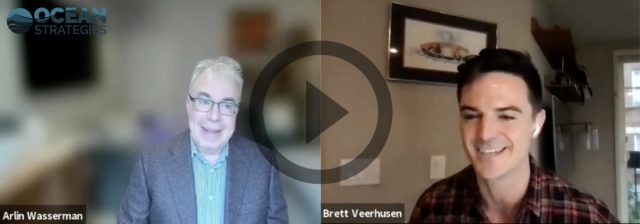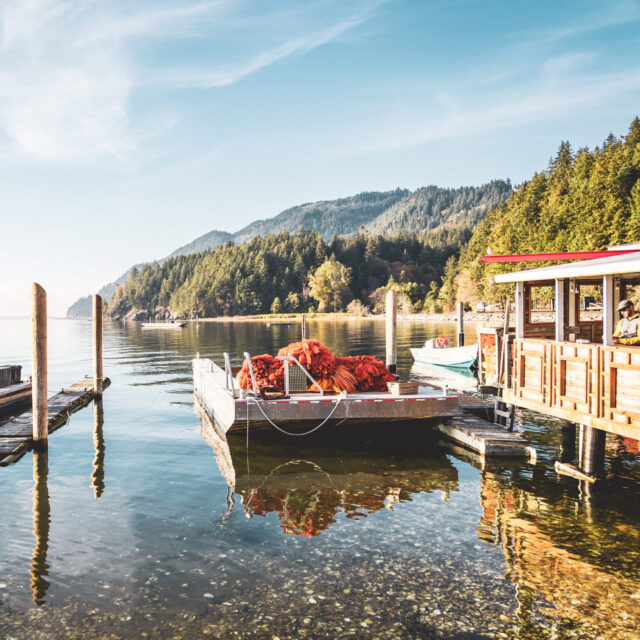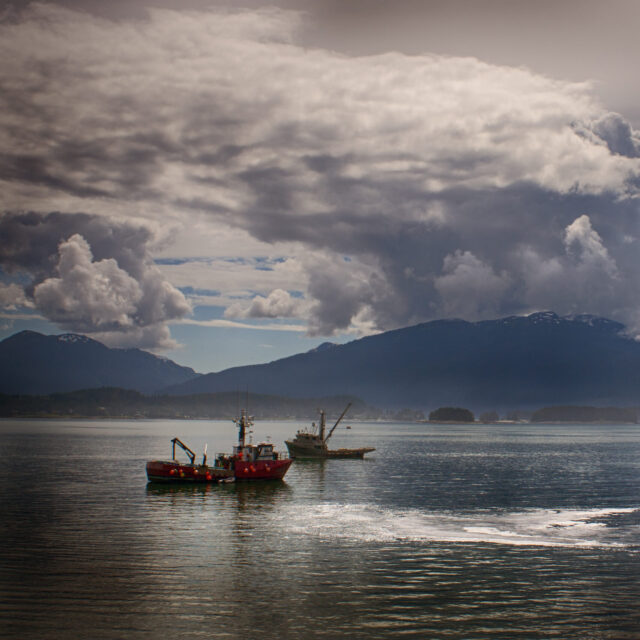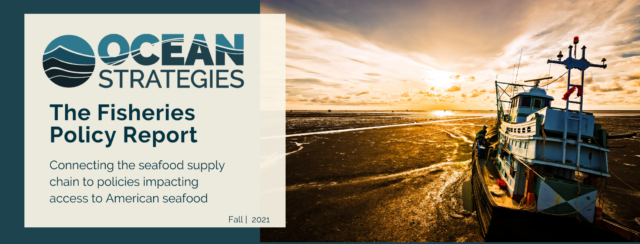
The Ocean Strategies Fisheries Policy Report provides timely policy and industry updates that connect America’s sustainable seafood supply chain — including grocers, restaurants, distributors, transportation and the many other businesses that depend upon seafood access.
Not already signed-up? Receive future updates by signing up.
WHAT WE’RE WATCHING IN FEDERAL FISHERIES POLICY
House Natural Resources Committee holds Magnuson-focused hearing
Members of Congress took a step toward reauthorizing America’s federal fisheries law last week, as the House Subcommittee on Water, Oceans and Wildlife took up a hearing on 3 bills:
- H.R. 59 (Rep. Don Young, R-AK) Strengthening Fishing Communities and Increasing Flexibility in Fisheries Management Act.
- H.R. 4690 (Rep. Jared Huffman, D-CA) Sustaining America’s Fisheries for the Future Act of 2021.
- H.R. 5770 (Rep. Debbie Dingell, D-MI) Forage Fish Conservation Act of 2021.
The first two offer updates to the Magnuson-Stevens Fisheries Management and Conservation Act, and their respective sponsors have worked in recent months to examine the common ground and differences between the two approaches. While full MSA reauthorization will require additional steps in the House and a companion in the Senate (unlikely this Congress), last week’s hearing and any potential bill mark-ups to follow will continue to highlight the priorities and tension points we can expect to rise to the top as work to reauthorize Magnuson continues.
Topping that priority list for Huffman are what he calls needed updates to a strong foundation: climate change considerations, bycatch reduction, habitat protection and working waterfront infrastructure. Young is focused on ensuring seafood yield, and maintaining authority in regional councils rather than the Department of Commerce.
The subcommittee heard witness testimony from an array of government officials, fishery stakeholders and marine conservation experts. Input varied widely, from support for status quo to requests for addressing fishing community needs, recreational fishing accountability, indigenous representation, ecosystem resiliency and impacts to fisheries from other industries (i.e. offshore wind.)
While the combined hearing was a promising step toward bipartisan work in the House, it also highlighted remaining controversy around MSA reauthorization and its emerging tension points. Ensuring and growing America’s access to sustainable seafood will mean striking the right balance: between sustainability improvements and supply stability, between commercial and recreational access, and creation of a more just process while maintaining the functionality of our complex management system.
America’s seafood supply chain businesses are part of the story and success of that dialogue.
It’s important that lawmakers hear from supply chain businesses on sustainable seafood policy, and there are plenty of ways to engage for those that aren’t ready to take strong positions. This period of development and bill markup is a good time to support a robust process that keeps reauthorization moving forward — while recognizing and incorporating considerations for America’s supply chain businesses.
Seafood-dependent businesses and their partners can consider this approach to measured engagement on process support during the long-term path to reauthorization.
Watch a recording of the hearing.
Ocean Strategies’ interview with Rep. Huffman & MSA Special Report.
 Lawmakers seek improvements to ethical seafood sourcing
Lawmakers seek improvements to ethical seafood sourcing
Where seafood comes from, and the ethical practices of how it’s harvested, continues to be a major focus for lawmakers, with legislation progressing through the House this fall. Expansion of the Seafood Import Monitoring Program (SIMP) is included within HR 3075, the Illegal Fishing and Forced Labor Prevention Act introduced by Reps. Huffman (D-CA) and Graves (R-LA), which was marked-up and passed favorably by the House Natural Resources committee on October 13th. The commercial fishing and supply chain industries all support the government’s goal of curbing IUU seafood, however, views differ on whether expanding SIMP is the best way to do it.
NOAA Fisheries released a report on Initial Implementation of SIMP in May 2021, which found a number of efficacy issues with the program. The agency reports that “the majority of SIMP audits do not identify noncompliance,” and that of non-conformances “SIMP does not prevent or stop IUU fish and fish products from entering U.S. commerce.” NOAA Fisheries argues that greater resources are needed to effectively administer SIMP. Some industry organizations, like the Southern Shrimp Alliance, support establishing an office within NOAA Fisheries dedicated to enforcing the program. However, the National Fisheries Institute says this would be costly and not an effective way to combat illegal fishing. Major supply chain organizations like FMI, NRA and NFR raised similar concerns during SIMP’s enactment.
Others in the commercial fishing industry believe an expansion for high-risk species based on a risk assessment would be a better strategy to ensure the program is not overwhelmed and ineffective. They also want to address some outstanding issues in HR 3075, which requires automatic identification systems (AIS), a global requirement to aid in tracking ships’ behavior on the high seas. AIS is duplicative of VMS in U.S. fisheries, and not a secure transmission source.
The bill has a long way to go still. The House needs to vote, and there is no companion bill in the Senate. Readers can contact Representatives Huffman and Graves offices to learn more.
AQUAA Act reintroduced in Congress
Lawmakers revisit bill to manage aquaculture development in federal waters
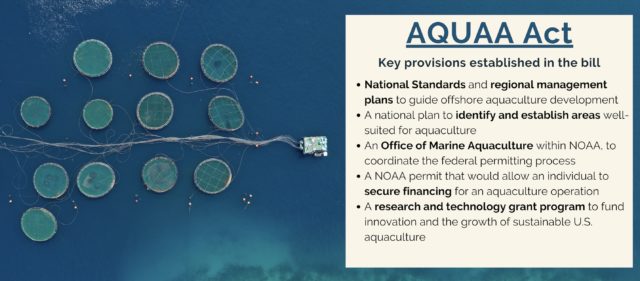
Congressional members took a third swipe toward comprehensive aquaculture policy last month. The Advancing the Quality and Understanding of American Aquaculture Act (AQUAA Act) was reintroduced in the Senate on October 28, 2021 by Senators Roger Wicker (R-MS), Brian Schatz (D-HI), and Marco Rubio (R-FL). This bipartisan bill would establish regulations to advance aquaculture development in U.S. federal waters. The main provisions of the bill include aquaculture siting, permitting, monitoring and enforcement. This is the third time the bill has been introduced in Congress, and this iteration is identical to its previous version, causing pause for opponents that express concern over offshore aquaculture’s impact on the marine environment and the health and sustainability of wild-capture fisheries. Commercial fishermen want more information to understand what happens to seafood markets when flooded with new product, reminiscent of farmed salmon’s introduction in the 80’s and 90’s. Alaskans, who are a seafood political juggernaut, are adamant about a state’s right to opt-out of federal aquaculture, which was not included in this recent bill.
Proponents of the bill applaud the regulations it has laid out, as they state a major hindrance for the aquaculture industry’s responsible expansion has been the lack of a comprehensive regulatory framework and the many uncertainties within the permitting process. Supporters of increased domestic aquaculture production claim it will lead to less reliance on foreign seafood imports and therefore more food security for Americans. They also state the economic opportunity associated with aquaculture expansion, and how it will allow for the growth of other industries such as agriculture (feed production), manufacturing, and food processing and service. Working waterfronts also stand to benefit from increased activity and industry.
The AQUAA Act faces an uphill battle in the Senate, as many legislators would rather focus on regenerative or “unfed” aquaculture, or mariculture, such as the growing of shellfish and seaweed. Commercial fishermen and others within the seafood industry have expressed greater support for mariculture than finfish production, and are asking for more information and outreach to their sector to better understand the impacts of finfish farming.
 30×30 public comment period now open
30×30 public comment period now open
Seafood dependent businesses asking Biden Administration to prioritize a robust sustainable seafood supply within conservation effort
The Biden administration is seeking broad public comment through the end of the year on its sweeping climate-focused initiative. The Executive Order on Tackling the Climate Crisis at Home and Abroad was signed in late January of this year, and ambitiously addresses the growing impacts of climate change. In a first step toward meeting that order, a multi-agency report released in May (Conserving and Restoring America the Beautiful) outlined major conservation initiatives that include 30×30, an effort to conserve and restore 30% of our nation’s lands and waters by the year 2030.
Seafood industry stakeholders have been actively providing input to NOAA on the agency’s role in communicating the success of U.S fisheries management. Maintaining a sustainable seafood economy and protecting fishing communities are vital as the administration works towards meeting 30×30’s goals.
NOAA is now asking stakeholders to comment on how it should use its authority, guided by eight core principles, to advance the conservation goals and recommendations covered in the America the Beautiful report. The agency has outlined specific topics they would like stakeholder input on, including the types of information and knowledge that should be incorporated into decision making, and how NOAA should be cooperating with other governments to achieve initiative goals.
Seafood- and fisheries-dependent businesses are strongly encouraged to submit comments. More information can be found on the Federal Register Notice and comments may be submitted here. The deadline to provide input is December 28, 2021.
OP-ED: THE SEATTLE TIMES
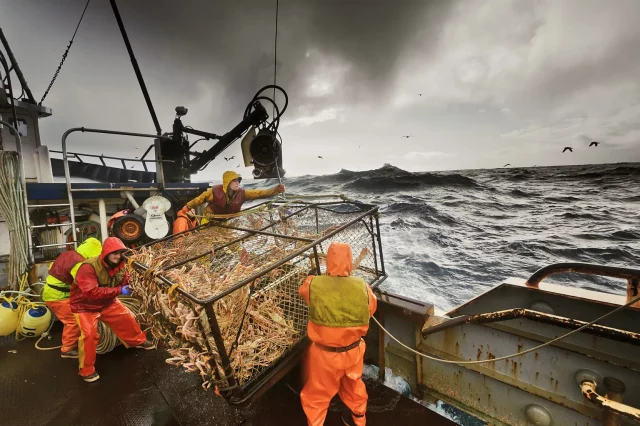
Eyewitnesses to disaster: Commercial fishermen implore action on the collapse of Alaska ecosystems
*The following is an op-ed published in the Seattle Times on October 29, 2021. The article can be found here.
By Sean Dwyer, Linda Behnken and Ricardo Merculief
As commercial fishermen, we go to sea with a few simple goals: To supply food, to generate a livelihood and to work safely and sustainably. We rely upon a healthy ocean and are working harder than ever to build resilience in an era of industrial harvest, economic consolidation and climate shift. With a globe to feed, and small fishing communities increasingly vulnerable, it’s a balancing act.
Through the Magnuson-Stevens Act, the U.S. has an incredible system of science-based fisheries management, with none so celebrated as the great North Pacific, known for its vast ocean habitats, world-famous fisheries and vibrant fishing communities.
That very seascape, however, is experiencing a series of fishery disasters today that demand the nation’s collective scrutiny, and our response.
Photo credit: Christopher Miller, csmphotos.com
OCEAN STRATEGIES MEDIA
Ocean Strategies is proud to participate in seafood dialogues across the country, bringing our boots-on-deck perspective to local-to-global seafood movements. We’ve been busy this fall! Including launching Ocean Strategies’ brand new website and its blog: Ocean Pulse. Check out the links below to learn more.

 .
.
The Atlantic
We joined the Atlantic Festival sustainable food hour to discuss how to connect America’s growing seafood consumers to seafood sustainability efforts.
Conservation Alliance
Hannah joined the Conservation Alliance for Seafood Solutions’ Annual Meeting to present on next generation fishermen programs and why their approach to mentorship and training is key to resilient fishing communities.
Aquademia
Q & A with Arlin Wasserman
Ocean Strategies recently chatted with Arlin Wasserman, founder and managing director of Changing Tastes, a management and culinary consulting firm focused on delicious, profitable, sustainable solutions. We tapped into his expertise to learn more about consumer behavior around seafood, the effect Covid has had on seafood sales, marketing and messaging opportunities, and proposed federal policies that will affect the sustainability of the seafood supply chain. You can contact Arlin at: (arlin@changingtastes.net).
Click the image above to watch and listen to the full interview with Arlin Wasserman and Ocean Strategies Principal Brett Veerhusen. To read the full text of the interview click here.
Brett: Arlin, we’re lucky to have you join us today, thank you. I want to tackle the important questions first — What seafood is on your holiday menu this year and how are you going to prepare it?
Arlin: This is a tricky question because for the first holiday in the last decade I am not the one doing the cooking. The seafood we’ll be having is oysters in the stuffing. We’re not having turkey, because global supply chain disruptions have resulted in grocery stores being out of stock on about 60% of the turkeys they hope to have.
Brett: So this year, we’re lucky to gather with loved ones again. Let’s start with a conversation about how the pandemic has impacted consumer behavior. In what ways, Arlin, has Covid changed how we purchase and eat fish and seafood?
Arlin: During most of 2020 and early 2021, before we were vaccinated, how Covid changed how we eat was pretty profound. We stopped eating out at restaurants and about 1 in 5 of us determinedly stood in line for take out food and more of us had food delivered to us. But in summer of 2021, as warm weather, outdoor dining, and widespread access to vaccinations all came, Americans spent record amounts eating at restaurants. Only last month that trend stopped.
Up until Covid we ate more of our meals containing fish and seafood in restaurants. That was where we tried foods we weren’t as familiar with and decided if we liked them or not. For instance, before Covid the type of fish and seafood that was being added to menus faster than any other was octopus, something people love to eat and take pictures of. In fact, octopus consumption in the several years before Covid increased so much in the U.S., that we drove the entire growth in global consumption while the rest of the world ate a bit less of it.
We also went grocery shopping less frequently. Before, we would buy fish at the fish counter, either fresh or previously frozen fish — we like to think of it as “bendable fish” (we may have trademarked that term) — that’s fish that is ready to cook and does not need to be thawed in your refrigerator, it’s already been thawed at the grocery store and handed it to you in bendable form. So we would cook one meal with fish and seafood for each time we went to the grocery store. We did several surveys during Covid, and 95% of grocery shoppers continued this practice. So less frequent grocery shopping meant eating fish and seafood less often.
During Covid, consumers bought a lot of canned tuna. Here’s the thing though — they didn’t eat it. In April of 2021 we asked consumers, “in the last 60 days, how many cans of tuna did you purchase and how many do you have left?” We found out that the more cans of tuna someone bought, the less likely they were to have eaten any of it. Turns out that those cans of tuna were being kept for that final meal (or maybe because you can throw one to knock out the zombies as they approach your house). So now when we want to eat tuna, we’re not buying it at the grocery store, we’re digging into inventory. Tuna sales are now below pre-Covid levels, but consumption is about the same.
Brett: Let’s talk about marketing seafood. What messages – whether it’s retailer, restaurant, government or fishermen – need to be amplified?
Arlin: Right now what we see is that consumers really want to enjoy themselves. So things that are delicious, that are unusual, things with visual appeal, and dishes you can share with others at your table, are all ways to drive fish and seafood sales. In terms of increasing consumption, restaurants can move fish and seafood from the appetizer to the entree. That’s hard to do with fish fillets, steaks, and whole fish — but when you think about other preparations, from ceviche or pickled fish, to mixed fish and seafood dishes, diners are ready to accept bigger portions. We also see tremendous opportunity in cured and smoked fish. Grocery retailers and others in the seafood industry can show people that fish and seafood will keep in your home refrigerator for days to a week at a time. With smoked and cured fish, refrigerated life is quite long and can even be a regular mainstay in meals like breakfast and lunch, the two meals where we typically don’t eat as much seafood.
Brett: Let’s talk about how consumer behavior around seafood has changed. How have our protein preferences shifted?
Arlin: Here’s the reality — we have eaten less red meat over the past decade and replaced it with an even larger amount of chicken. But for the last two years consumer preference is to replace some of the meat they eat with fish and seafood, which is an amazing market opportunity. We’re going through a once in a generation or two rotation or reconsideration of our protein choices.
A large segment of the American public, baby boomers, are facing the start of aging and being told they need to watch their cholesterol, and maintain heart and brain health. The message about fish and seafood as a healthy nutritious choice really works with them. They also happen to be the ones that favor wild fish over farmed fish. Many of them eat fish and seafood twice a week.
But there’s about two-thirds of Americans that eat fish and seafood, but don’t eat it that frequently, and they look very different. People who eat it once a month tend to be baby boomers also, but they’re often female that live alone and are less concerned and motivated by health.
People who eat seafood once a week tend to be younger (gen-z or millennials). Males in these generations tend to eat out more frequently than the general public; they eat for entertainment and for curiosity. They are really concerned about ocean health issues, and see eating fish and seafood as a direct connection between the ocean and their body.
But the issues of ocean microplastics, labor conditions, antibiotic use and its impact on ocean life, and worker and fishing community health — these are all issues identified by the sustainable seafood community as things to work on, but they’re now reasons to not eat fish and seafood for a group of people that could eat it more often. The circular firing squad is not the right approach.
Brett: So around ocean health — this is interesting because these issues, like microplastics and labor conditions, are related to active pieces of federal policy and legislation, but now that messaging has turned people off. Is there a way to communicate the environmental or ecosystem benefits of eating more seafood than other protein sources?
Arlin: There is a general sense that chicken and plant-based foods are better than beef. And there’s a lot of ways they are, one being animal welfare, and another is what we call “clean label” or “clean ingredient.” Chicken producers have eliminated antibiotic use largely in the U.S., and also the environmental footprint. For younger people that is more important and better understood. When you ask about fish and seafood, we don’t really have the same conversation. Instead we talk about good fish vs. bad fish and when you make it too complex, it’s time to just go eat more chicken.
The growth in chicken consumption is relatively recent. For a while the poultry industry used a phrase — “let’s set the record straight.” They claimed antibiotic use was not bad. So this dramatic increase occurred when some of the largest chicken manufacturers and producers finally stopped using antibiotics and simply claimed that they had a better product made responsibly and with care.
The fish and seafood industry is kind of at the same place the poultry industry was. We’re afraid to look and say, “are there things that we can do better?” and then claim those things. There are things that we can do better. For example, we still fly our fish around in airplanes, which changes the whole carbon footprint of popular seafood like farmed salmon. We could choose to do this differently, and then you can start to claim a good environmental footprint compared to other protein choices.
Regarding plastic — instead of “setting the record straight” about whether ocean plastic is good or bad to eat, we could be having a conversation about seafood communities going plastic free or plastic neutral. The industry taking positive steps to make consumers feel empowered when they buy your product is a great way to move forward on these issues, rather than trying to set the record straight.
Brett: There are several fisheries and seafood-related policies currently being addressed in the federal arena, such as the Magnuson Stevens Act reauthorization, the 30×30 initiative, and the AQUAA Act. What sort of policies are most important for ensuring sustainable seafood and responding to consumer needs and behavior?
Arlin: The MSA reauthorization is an important part of why Americans would favor buying domestic fish and seafood if it were more available and more affordable. Having the best managed fisheries in the world, governed by a strong regulatory system or good rule of law, with no forced labor — all very positive things.
If we allow more offshore aquaculture maybe we can get the cleanest and best regulated industry in the world, and then we start to have more domestic fish with a smaller carbon footprint and an additional source of income for coastal communities.
The 30×30 initiative is an interesting one. Land-based livestock has gone around grazing on public lands. And if we’re going to open up to a lot more offshore aquaculture, we need to know that all of the ocean floor will not be covered by tanks, nets and pens. There needs to be some balance here, we can’t have the entire planet not in its natural state.
The last thing I want to mention is that we just set an ambitious climate goal. A couple of things to keep in mind — the first is that our move to eat less beef between 2015 and 2019 helped us already achieve 15% of our nation’s carbon reduction goal the Biden administration committed us to this month. If we switch out one or two more meals each month to fish and seafood, we can reduce our nation’s carbon footprint by another 5%, that means menu and recipe choice can get us one-fifth of the way to our Glasgow goals. We are doing the research here, we’ve done the math, and this is one of the first times we’ve said this in public.
But in order to achieve this we have to choose seafood varieties that were not flown here, that weren’t produced by clearing mangrove swamps, and we need to understand that American waters are the best place to get fish and seafood.
